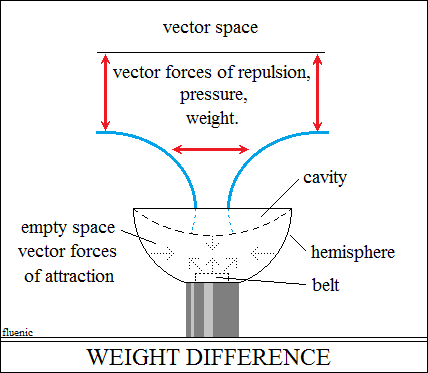Vector space.
The dimensions of the vector space are variable with the polarization
density
and are incommensurable. The distance between two vector structures (bodies)
depends on how the structures polarize the vector space between them.
This results in the unity and interdependence of space with its vector
structures. The vector forces of attraction and repulsion are what determine
the size variation. The variation of the dimensions of the space can be
measured experimentally, "weighing on". The electrostatic generator
symmetrically polarizes the surrounding vector space. If the generator
hemisphere is covered with a concave cover, it will asymmetrically polarize
the surrounding vector space and the asymmetry of the forces amplifies
the weight of the generator. The difference in weight shows the variation
in
the density of the vector space, pressure. The difference in weight and
pressure is just a demonstration. The increase in weight of the human
body,
from 3 kg at birth to 60-70 kg at maturity, represents the increase in
the
density of the vector space. Also, the increase in strength, the capacity
for
effort, reveals the energy of the vectorial space. The variation of the
density
of the vector space is the phenomenon that produces the fall and the weight
of the bodies. The pressure of the space, of the orthogonally closed vector
circuits, increases exponentially towards the center and forms the electric
core, at zero Kelwin. The effects called oscillations, forces, pressures
and
densities with the gaseous, liquid and solid states, attest to the variation
in
the dimensions of the vector space. The variation of the density of the
vector
space moves the vectorial structures curvilinearly, in the form of oscillations
called orbits. In their totality, the phenomena described are the interactions
of the forces of attraction and repulsion between the vector polarities
are energy.
With these forces, in orthogonally closed vector circuits, the vector
space became
microscopic, directly the solid state of the hydrogen atom, potential
energy.
With the same forces, the vector space formed the closest bonds between
the
hydrogen atoms, in the carbon atom, excelling in the diamond structure.
No one
can admit that the diamond is a vector space, although its structure proves
it.
